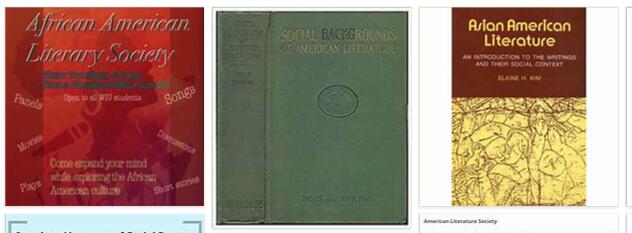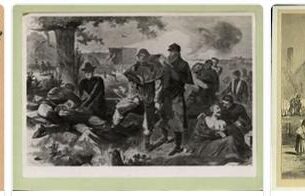The new century is very rich both in the field of prose and in that of poetry and theater (which remained mostly at the derivative level, of mere theatrical exteriority, in the nineteenth century). A novelist like Th. Dreiser (1871-1945) marks the full affirmation of the realistic narrative and of social denunciation; at the same time, G. Stein (1874-1946) offers the presuppositions and the example of a literary experimentalism destined to affect the new fiction. Stein baptizes the great storytellers matured in the 1920s by Sh. Anderson (1876-1941) to FS Fitzgerald (1896-1940), from E. Hemingway (1899-1961) to J. Dos Passos (1896-1970). They are the writers of what Stein defines as the “lost generation” and which gives voice to the disillusionment and inner revolt aroused by the war: writers attentive to the new narrative techniques of James and Joyce, of the fragmentation and flow of consciousness, incisive in the style and image they provide of a world and an era. United States is a country located in North America according to SOFTWARELEVERAGE.ORG.
In the years following the First World War, American literature moves to Paris: it will be the intellectuals of the “lost generation” immersed in European culture who will give voice to that spiritual crisis which, through detachment from American reality, attempts to reconstruct a literary world cosmopolitan. This is especially the case of Hemingway, Nobel laureate in 1954, who through the subtle realism and the lucid style of his short stories and novels influences the narrative of subsequent generations. On the most popular side, in the mid-twenties, the hard boiled genre also appeared on the pages of US pulp magazines., which revisits the traditional yellow. Its leading figures are D. Hammett (1894-1961), JMCain (1892-1977) and R. Chandler (1888-1959), whose novels deal with the themes of corruption and organized crime in Southern California. Thirty, characterized by a greater social commitment due to the catastrophic consequences of the 1929 crisis, writers approach themes of more direct social relevance. This is especially true of Dos Passos, who thanks to his experimentalism distances himself from writers linked to the formula of social or proletarian realism, such as JT Farrell (1904-1979), E. Caldwell (1903-1987), J. Steinbeck (1902- 1968), or as S. Lewis (1885-1951), which already in the 1920s had given a devastating image of the American province and bourgeoisie.
Far from the formulas of social realism or commitment remains the greatest narrator of the twentieth century, W. Faulkner (1897-1962), inspired by the visionary and symbolic models of Melville and Conrad and exploiting Joyce’s techniques to create his own grandiose and grandiloquent saga of lost greatness and southern decadence, in which the destiny of whites appears indissolubly and tragically linked to that of African Americans. The breadth of his historical and metaphysical vision, capable of giving life to an autonomous narrative universe, the depth with which he investigates the complexities of the human soul, family events and the evolution of a society, his sense of history and of sin, myth and symbol, language and technique, place it in the foreground among contemporaries. Alongside him, elegant storytellers such as T. Wilder (1897-1975) or W. Saroyan appear of secondary importance (1908-1981), the obsessively self-imbued narrative of T. Wolfe (1900-1938), or H. Miller himself (1891-1980), who in the 1930s expressed the vision of a world through the violence of words precipitated into chaos. In those years also appear the first works of J. Fante (1911-1983) who lends his pen to both literature and cinema. The emergence of an Afro-American literature is noteworthy, which has in R. Wright (1909-1960) a first prestigious narrator and is destined to assert itself after World War II with R. Ellison (1914-1994), the writer Z. Neale Hurston (1891-1960) and J. Baldwin (1924-1984); a poet like L. Hughes (1902-1968) recovers the indigenous tradition of the blues by addressing themes of protest that with L. Jones reach the maximum expressive and denunciation violence. In the field of poetry, the American twentieth century moves from poets such as EA Robinson (1869-1935) and R. Frost (1875-1963), who express the rural and provincial reality with dry and measured tones, or as C. Sandburg (1878- 1967) and V. Lindsay (1879-1931), who draw on Whitman’s lesson to sing the brutal and popular reality of America. EL Masters is also part of the poetic revival of the 1910s (1868-1950), with his epitaphs that reveal the frustrations and secrets of provincial life.
The great representatives of the historical avant-garde reacted to their provincialism, Th. S. Eliot (1888-1965) and E. Pound (1885-1972), who moved to Europe (like many contemporary storytellers) to give life to a experimental poetry that expressed twentieth-century dissociation and shattering. The principles of the syncopated form and the mask that hides the poet, of the objective correlative and the significant juxtaposition of the fragments, of the associative montage and of the rough language, are the basis of their conquests. Pound passes through the experience of imagismand vorticism to land on the epic and personal route of the Cantos; Eliot passes by the vision of a world shattered expressed in The Waste Land (Waste Land) the formal and spiritual reconstruction of the Four Quartets. In their wake, poets like EE Cummings (1894-1962) and W. Stevens (1879-1955), or like H. Crane (1899-1932), who also refers to the Whitmanian model to try to give total poetic expression. to the American world. From Whitman more than from Eliot, after the first imagist phase, WC Williams moves (1883-1963) to give voice to the historical and national reality of America, theorising, in contrast to the expatriates, the adoption of an American language that is moved and spoken. Some of his theoretical premises start after World War II, also passing through the mediation of Pound, the poets of Black Mountain College as well as the beat poets themselves: the former adopt the “composition on the field” and the projective verse to express the elusive nature of contemporary reality, the latter focus on the spoken, shouted and declaimed language to express the sense of revolt and the affirmation of freedom of the 1950s, even as a polemic towards the dominance of a neo-academic poem developed in the years of the cold war on the model of Eliot. The development of a “metaphysical” and conceptual poetry, cultured and ironic, ambiguous and paradoxical, which manifested itself between the two wars in the school of the South, of the fugitives and of the southern agrarians, was not extraneous to the rise of this neo-academicism., programmatically hostile to Northern industrialism and progressivism. The period between the two wars also saw the flowering of an original American drama, first with experimental “small theaters” and then with E. O’Neill (1888-1953), the most important and important figure in this field, who he passes from experimental and expressionistic forms to the exploitation of psychoanalytic themes, to arrive at the naked and violent psychological realism of the latest dramas. In the Thirties there are examples of social drama with C. Odets (1906-1963) and poetic drama with M. Anderson (1888-1959), while T. Wilder expresses the poetry of the small town and the spiritual resistance of man to hardships of life.


